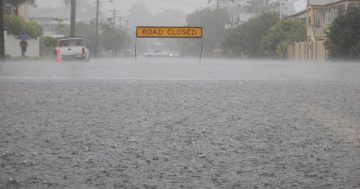
El Niño could be officially declared any day now. Photo: Sally Hopman.
An El Niño event could be officially declared as soon as next week following warnings throughout the year from Australian and international authorities to expect severe weather conditions as the oscillation joins up with climate change.
Government agencies at federal, state and territory levels are bracing for the impact across portfolios – from emergency services to health, to energy, environment, finance, infrastructure and beyond – and how they deal with a cocktail of weather conditions that could wreak havoc on the nation.
A recent update from the Bureau of Meteorology issues an alert that El Niño will likely develop during this spring.
When alert criteria have been met in the past – as they are currently being met – an El Niño event has developed around 70 per cent of the time, according to the BoM.
The update points to sea surface temperatures in the tropical Pacific exceeding El Niño thresholds, continuing to warm in recent weeks.
Climate models indicate further warming of the central to eastern Pacific is likely, the BoM says, with sea surface temperatures remaining above El Niño thresholds until at least early 2024.
“Global warming continues to influence Australian and global climates,” it states.
“Global sea surface temperatures were highest on record for their respective months during April to July 2023, with July also being the equal-highest month on record.
“July 2023 was also the hottest month globally in terms of 2 metre air temperature.
“Australia’s climate has warmed by an average of 1.47 ± 0.24 °C since national records began in 1910.”
The oscillation between El Niño and La Niña greatly influences climate patterns around the world, with fluctuating ocean temperatures in the Pacific coupling with changes in the atmosphere.
But climate change appears to be impacting El Niño, with global warming compounding its hot and dry conditions and creating circumstances for increased threat of drought and bushfires.
The World Meteorological Organisation points to El Niño conditions having developed in the tropical Pacific for the first time in seven years, setting the stage for a “likely surge in global temperatures and disruptive weather and climate patterns”.
A new update from the WMO forecasts a 90 per cent probability of the El Niño event continuing during the second half of 2023, which is expected to be of at least moderate strength.
“The onset of El Niño will greatly increase the likelihood of breaking temperature records and triggering more extreme heat in many parts of the world and in the ocean,” WMO Secretary-General Petteri Taalas said recently.
“The declaration of an El Niño by WMO is the signal to governments around the world to mobilise preparations to limit the impacts on our health, our ecosystems and our economies.
“Early warnings and anticipatory action of extreme weather events associated with this major climate phenomenon are vital to save lives and livelihoods.”
Australian scientists at CSIRO have been leading research into the oscillation phenomenon and issuing expert commentary on the likelihood of an El Niño and its potential impacts.
From a historical perspective, CSIRO experts have said the prospects of what is called a ‘Super El Niño’ this year are low because of the number of consecutive La Niña events.
But they have alerted the nation to expect warmer temperatures with the arrival of El Niño.
CSIRO’s climate intelligence director Dr Jaci Brown said: “El Niño years are generally warmer than other years over Australia and the whole globe on average.
“Australia is already 1.47 °C warmer as a long-term trend. We will see individual years go higher and lower than this.
“Globally, the warming increase is around 1.1 °C and it is less clear how much higher this El Niño would warm the whole earth – but it would only be for the period of the El Niño which would ease off in Autumn of 2024.”
CSIRO hydrologist Dr Francis Chiew said while it is too early to predict how a potential El Niño event might impact flows in the Murray-Darling Basin, the good news is wet conditions from three successive La Niña years have filled reservoirs and provided what is essentially a buffer for the system.
“In terms of the bigger picture, we can certainly expect droughts to become more frequent and more severe in the decades ahead, which will paint a more complex picture for recovery,” he said.





















